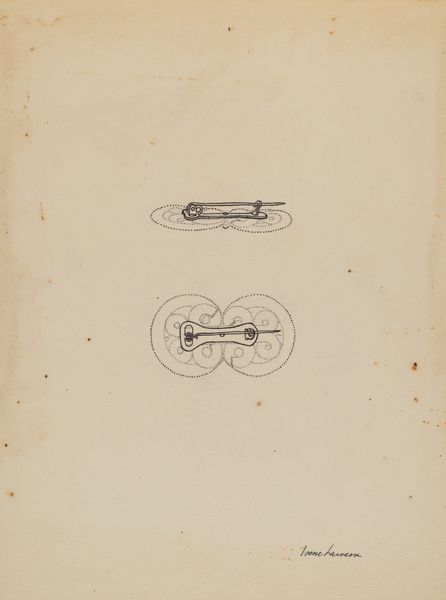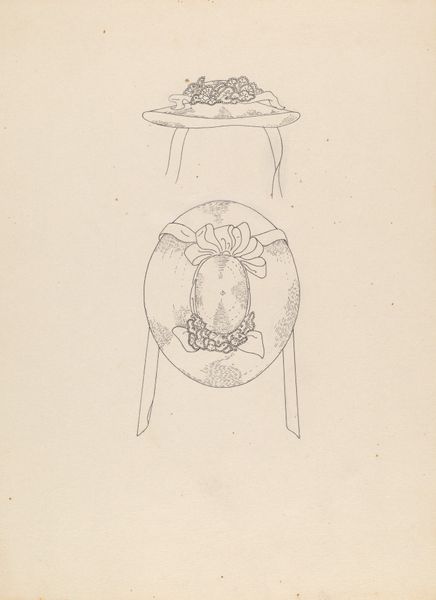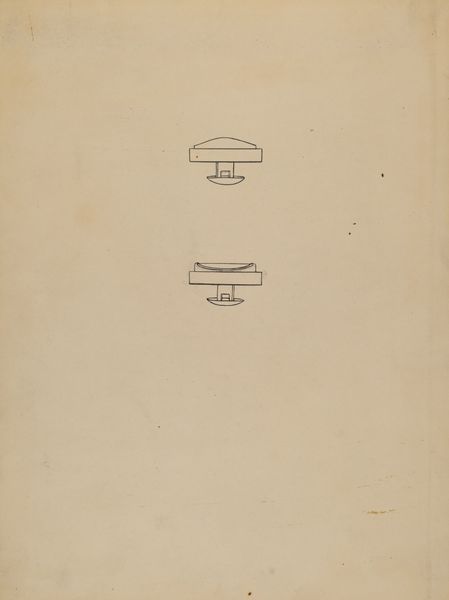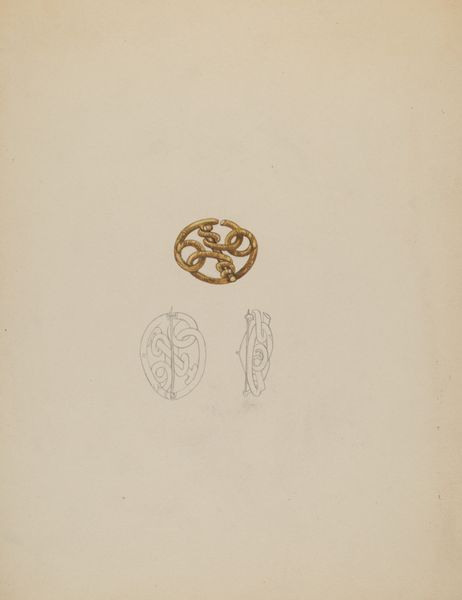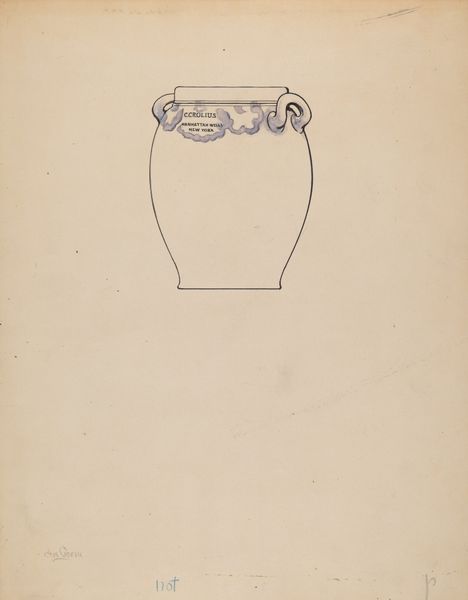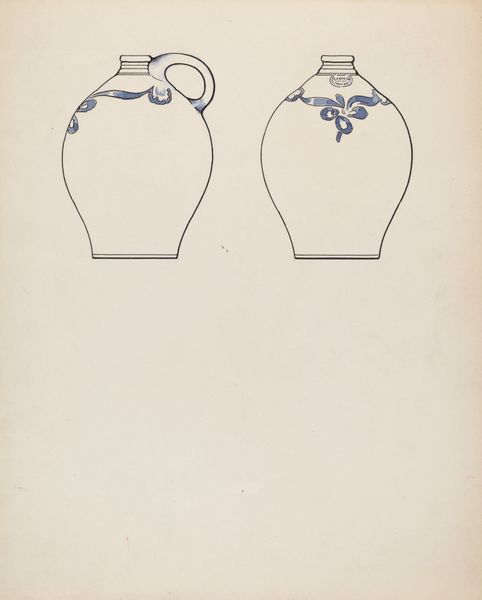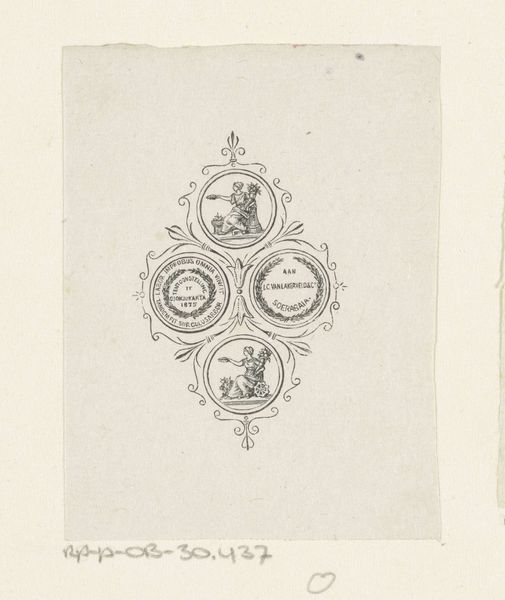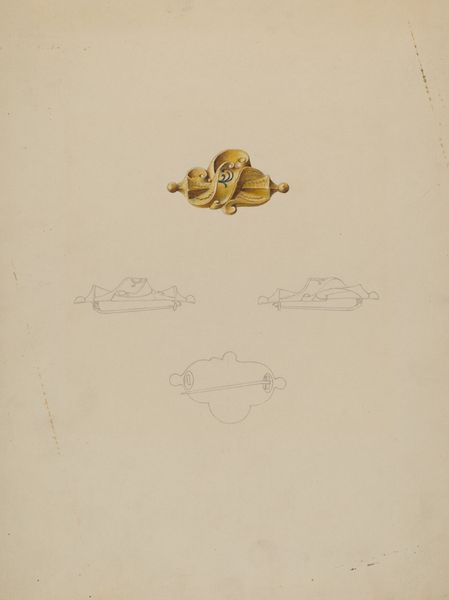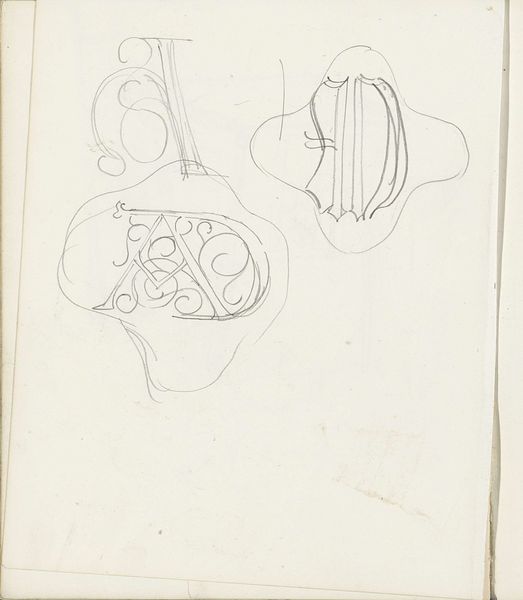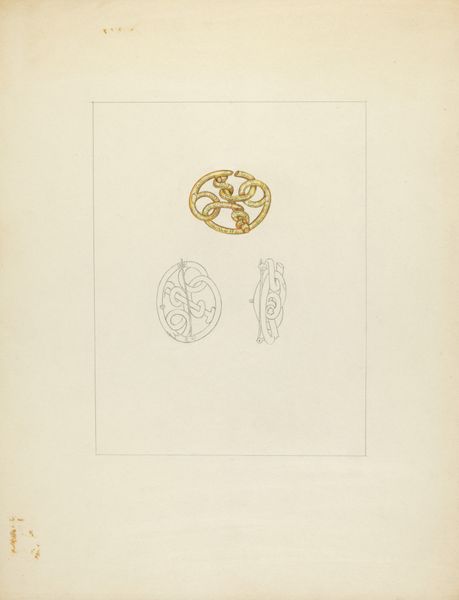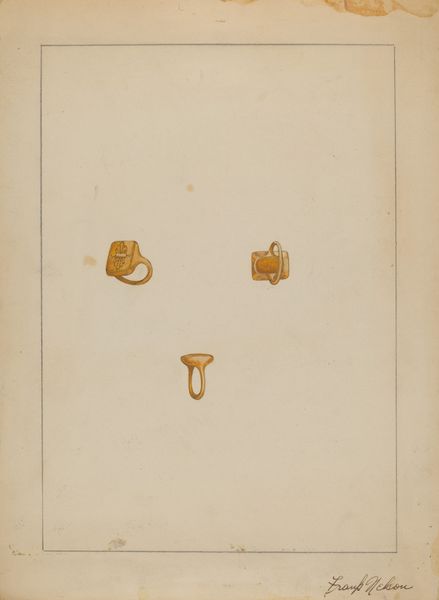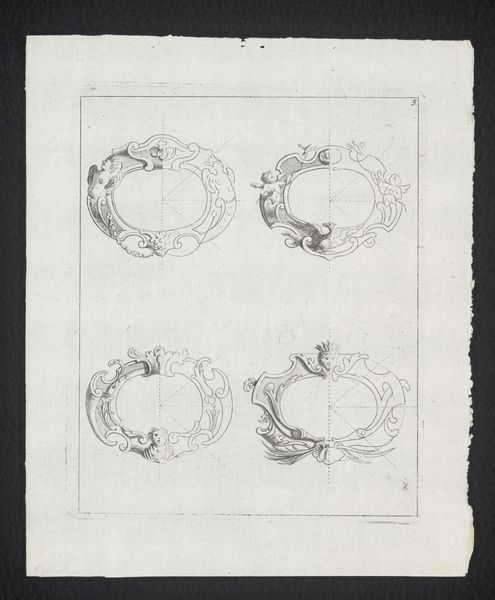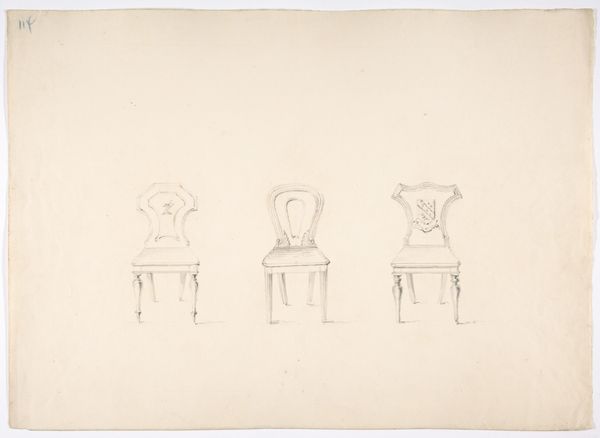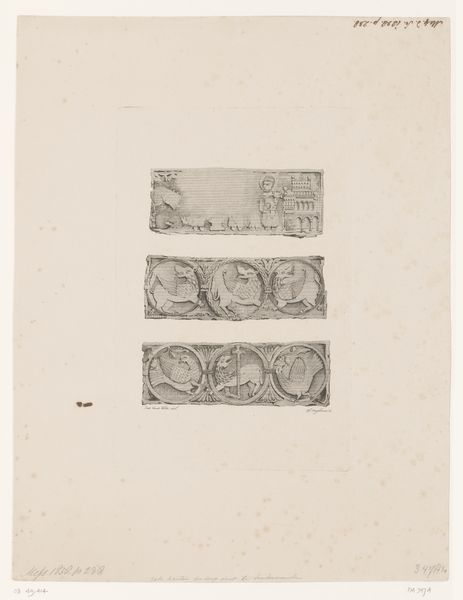
drawing, ink
#
drawing
#
ink
#
geometric
#
decorative-art
Dimensions: overall: 29.3 x 22.9 cm (11 9/16 x 9 in.)
Copyright: National Gallery of Art: CC0 1.0
Curator: Here we have "Brooch", an ink drawing created between 1935 and 1942 by Dorothy Dwin. Editor: There's a delicate elegance here, isn’t there? The sinuous lines, the crisp delineation of forms against the soft paper. It projects a sort of quiet, studied beauty. Curator: Precisely. Dwin, a significant figure within the decorative arts movement, renders the brooches with an intention to explore form and utility. The brooch, during this era, wasn’t just an adornment; it was a subtle signifier of social status and personal expression, reflecting prevailing economic and societal shifts. Editor: Note how she offers us multiple perspectives. We get front-on and almost bird's-eye views. The lines, although simple, convey so much about weight, texture, and depth. And, from a design point of view, you see Art Deco, but with more streamlined touches—an almost proto-modernist restraint. Curator: Exactly. The drawing allows us a peek into design processes and societal values during a tumultuous period in history. A brooch acted almost like a coded language. Consider how its form and materials played a role in defining wearers' identities amid wider political and social currents. Editor: There's a subtle play of positive and negative space in this composition too. How the stark whiteness throws the elaborate brooches into stark relief, yet the simplicity in its geometric layout is soothing. Curator: Dwin's exploration challenges what society deemed appropriate adornment, expanding design beyond mere aesthetic. Her vision of personal jewelry offered wearers the agency to project an image of personal meaning and individuality. Editor: Yes. Thinking about form, the repetition of curves and circular elements lends a rhythm, a harmony that calms the eye, right? I can almost imagine how each would feel if it were brought to life, made of metal. Curator: Well, this gives one a lot to think about regarding the era's social climate when analyzing Dwin's work and others'. Thank you for that astute observation. Editor: My pleasure. I now have a clearer sense of this artist's intention and this society's values through close consideration of lines, shapes and design.
Comments
No comments
Be the first to comment and join the conversation on the ultimate creative platform.
